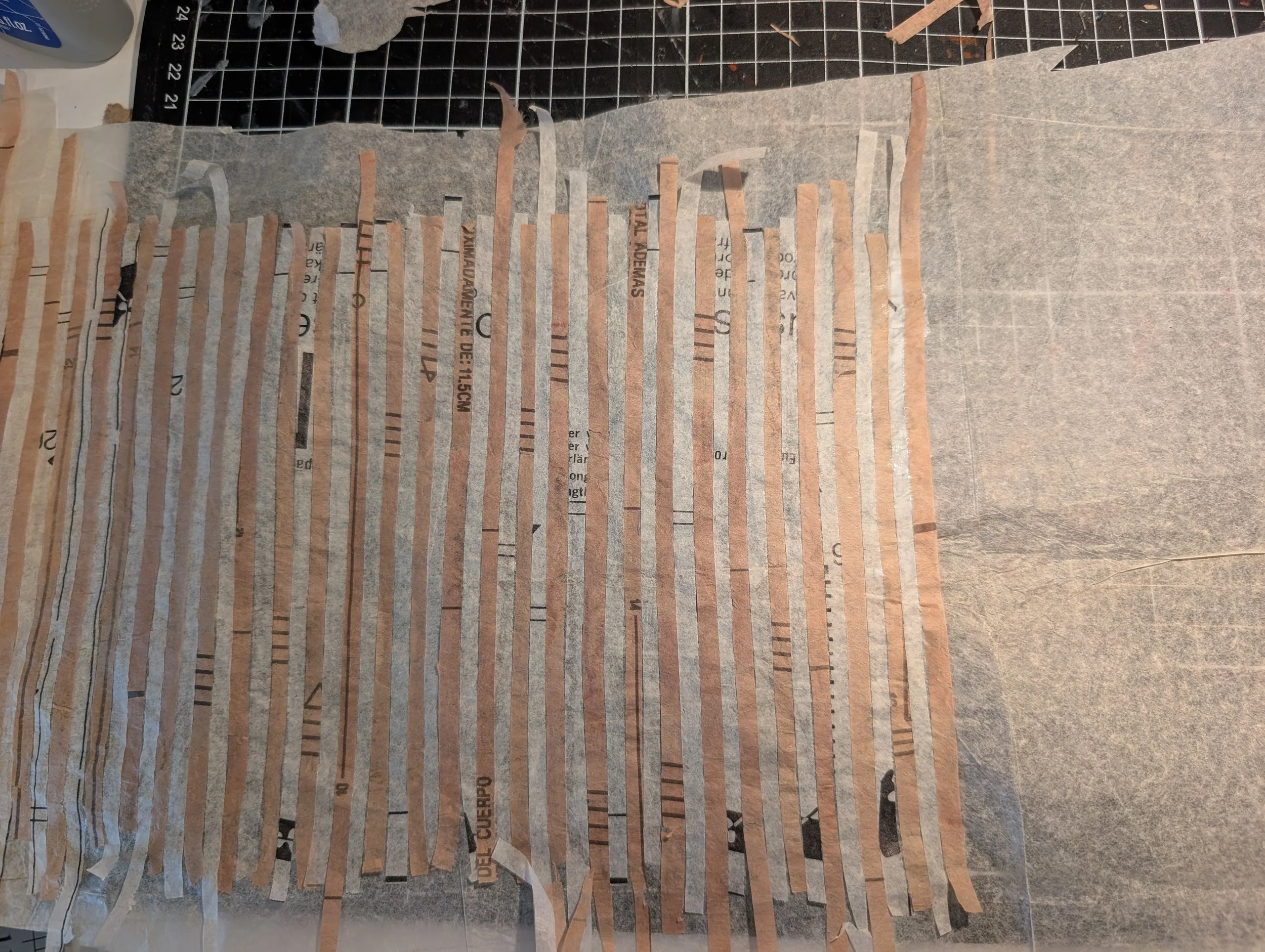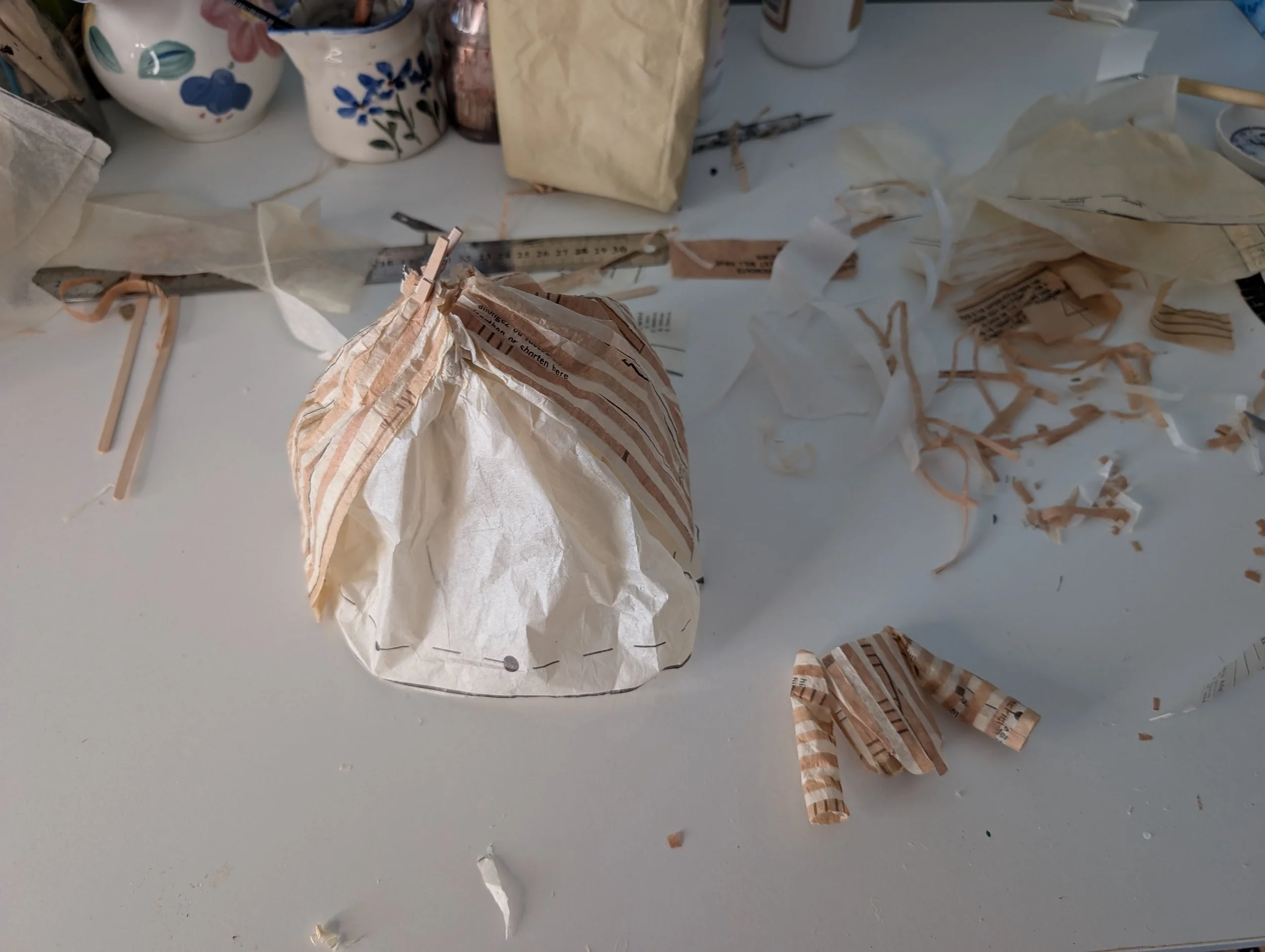Patterns of the Past: My Sculptural Striped Dress Journey
The Inspiration
When I first encountered historical striped dresses from the 18th and 19th centuries, I was immediately captivated by their elegance and visual rhythm. Those bold vertical stripes in pink, purple, and green against cream backgrounds weren't just fashion statements—they were declarations of status, taste, and craftsmanship. Each dress told a story of its time, of the hands that made it, and of the society that valued such intricate work.
These historical garments became the starting point for my sculpture, but I wanted to create a contemporary dialogue between past and present, between fashion history and modern art practices.
Natural Dyeing Process
Rather than using commercial dyes, I turned to nature's own palette. The delicate pink stripes were created using:
Beetroot for deep rose tones
Onion skins for warm amber hues
Rose petals for soft blush colours
Various red flowers for subtle variations in tone
Each dyeing session was an experiment in chemistry and patience. The natural materials were simmered slowly, their colours gradually bleeding into the sewing pattern paper. Unlike fabric, the paper absorbed the dyes in unpredictable ways, creating beautiful variations and organic imperfections that machine-printed perfection could never achieve.
Construction Techniques
The construction process was both meticulous and intuitive:
First, I dyed large sheets of vintage sewing pattern paper with my natural dyes
Once dry, I carefully cut each sheet into individual stripes
These stripes were arranged and glued onto a larger foundation piece, creating the structured bodice and flowing skirt
The "petticoat" layer was fashioned from undyed, natural sewing paper, giving the piece dimension and body
Finally, I added carefully crafted purple flowers and green leaves as focal points throughout the piece
What fascinated me most during construction was how the paper began to behave like fabric—it draped, folded, and even seemed to "flow" despite its inherent stiffness. The medium carries both the memory of its original purpose (to create clothing) and its transformation into something entirely new.
Construction Techniques
The construction process was both meticulous and intuitive:
First, I dyed large sheets of vintage sewing pattern paper with my natural dyes
Once dry, I carefully cut each sheet into individual stripes
These stripes were arranged and glued onto a larger foundation piece.
I then used this large piece to create the structured bodice and flowing skirt
The "petticoat" layer was fashioned from undyed, natural sewing paper, giving the piece dimension and body
Finally, I added carefully crafted purple flowers and green leaves as focal points throughout the piece
What fascinated me most during construction was how the paper began to look like fabric—it draped, folded, and even seemed to "flow" despite its inherent stiffness. The medium carries both the memory of its original purpose (to create clothing) and its transformation into something entirely new.
Conceptual Elements
This sculpture exists at the intersection of several conversations:
Sustainability in art: Using recycled sewing patterns and natural dyeing processes
Fashion history: Referencing the striped dresses that denoted status and wealth in earlier centuries
Traditional vs. contemporary craft: Employing ancient dyeing techniques alongside modern sculptural approaches
Material transformation: Elevating everyday utilitarian paper into fine art
The piece intentionally blurs the line between garment and sculpture, inviting viewers to reconsider their relationship with clothing patterns—objects typically discarded after use—now preserved as art.
Be clear, be confident and don’t overthink it. The beauty of your story is that it’s going to continue to evolve and your site can evolve with it. Your goal should be to make it feel right for right now. Later will take care of itself. It always does.
Looking Forward
Having this work selected as a finalist for the Trails Sculpture Prize in Victoria was truly affirming. This piece has opened new avenues for exploration in my practice. I'm continuing to investigate how historical garments can inform contemporary sculptural work, and how traditional crafting materials can be reimagined through an artistic lens.
The humble sewing pattern—with its mysterious markings, dotted lines, and instructional text—carries within it generations of knowledge about clothing construction. By transforming these patterns into art, I hope to preserve and honour this knowledge while creating something entirely new.
This sculpture was created in 2025 and exhibited as part of the Trails Sculpture Prize finalist exhibition in Victoria, Australia March 2025.














